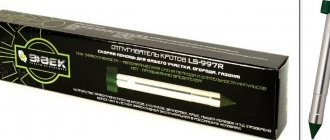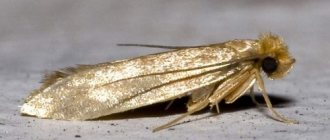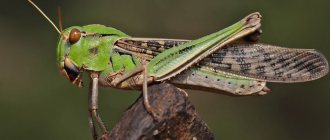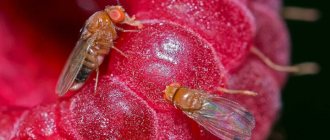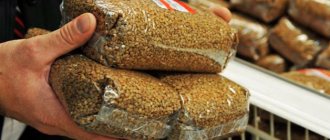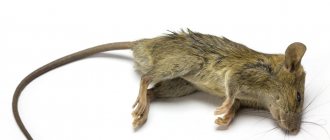Basic requirements for the construction of a pigsty
Building a pigsty is not as easy as it seems; this business has its own characteristics and difficulties.
There are a number of requirements, the fulfillment of which is mandatory for the successful development of the economy. Among them: Large area
- The building should be located on a hill - this will avoid excess dampness. You should not choose a place that can be ventilated - this way you can reduce heating costs;
- Big square. The pigsty provides both a place for living and for walking. Pigs require a lot of space. If you do not have enough space to contain the desired number of animals, you should not try to cram in as many as possible, this will greatly spoil the condition of your charges;
- Maintain a distance between the pigsty and residential buildings - at least 15 meters!
- Presence of all necessary communications. The proposed building must have water, electricity, gas if necessary;
- Resolution of the transport issue. You will have to deal with a large amount of waste that requires proper and timely disposal.
Failure to comply with these basic rules will primarily affect the farmer’s business, so this issue should be treated with due attention.
Manure removal process
Manure removal in a pigsty is an important point that directly affects the health of pigs. It can be performed with special equipment or hired personnel. If pig waste is not removed promptly, various problems may arise.
Devices for collecting manure work quite quickly and efficiently, so it is worth paying special attention to them. The equipment is divided into:
- Self-alloying system. Such equipment requires the installation of special pipes, containers and plugs. In addition, sections with animals should be at a slight slope. With the help of plugs and pipes, manure is transferred into the container. This equipment is the most popular and simple.
- Hydroflush. Suitable for small households, which is not very convenient. This device is durable, but very expensive both in price and in terms of resource costs. Cleaning is carried out using water. This type of equipment is not particularly popular.
- Delta scraper system. This equipment scrapes off manure with special shovels. It is very effective and popular in the market. It is worth giving your preference to this particular invention.
Self-alloying system
A room cleaning system must be present at any enterprise, because it will save effort and thoroughly clean the room. In addition, bacteria can be used for bedding in a pig barn. This is something akin to a dry closet. Bacteria trap odor and moisture, so the room remains clean and dry for a long time. This will help save money and make your work easier.
Features of the microclimate in the barn
The principle of organizing air exchange in a barn
Keeping pets and poultry in a barn requires effective ventilation. If in the summer the inhabitants of the barn stay in it only at night, and the rest of the time the room is ventilated, then in the autumn-winter period and early spring it is inhabited around the clock. The accumulation of large livestock, the heat and carbon dioxide they produce, waste products - all this affects air staleness, lack of oxygen, if ventilation in the barn is absent or performed incorrectly. Air exchange can be:
- Natural. Air flows penetrate and are removed from the room through specially equipped channels. Air movement occurs due to the difference in pressure inside and outside the barn.
- Forced. The air is moved by the vacuum or pressure created by the fan.
The first type of ventilation is economical and suitable for a small room designed for an equally small number of birds or animals. There are 2 pipes with a cross section of 150-200 mm. One of them protrudes slightly under the ceiling, the other (supply) does not reach the floor surface by 0.3 m. This is the simplest solution to the issue of barn ventilation, which is easy to do yourself. The second type is more effective because harmful secretions are removed forcibly. The fan used for this is mounted in a window or ceiling.
Description of the pest
Almost everyone knows what most types of flies look like. This is a small insect, about 8 mm long, with a hairy body, usually gray or black, and one pair of transparent membranous wings. The paws have sharp claws and sticky pads, which allows them to move on any surface. The organ of smell is the antennae, with the help of which they sense odors many meters around.
The eyes of these pests have a special structure. There are five of them in total: three eyes are located on the midline of the forehead and two large eyes on the sides of the head. The large eyes are made up of thousands of hexagonal facets. This arrangement of the organs of vision allows you to see everything around at 360 degrees, so it is almost impossible to catch it simply with your hands.
Fly
The mouth has a licking-sucking structure, a kind of proboscis acts as a mouth, therefore flies feed mainly on liquid food, solid food must first dissolve in saliva.
These pests multiply very quickly. A female can lay more than 6 clutches over the summer, and each clutch can contain more than 1800 eggs. Life expectancy is approximately 2-4 weeks, depending on climatic conditions, so up to 20 generations can change over the summer!
Why are flies dangerous?
Favorable conditions for living are places where garbage, dirt and various waste accumulate. They feed on the products of decomposition of organic waste. Since there are many different pathogens in the garbage, pests on their legs transfer them to the food on which they crawl.
Flies on food
Thus, food may contain pathogens of intestinal infections, tuberculosis, cholera, dysentery, helminthiasis, salmonellosis, ascariasis, and sometimes more dangerous infections - for example, anthrax. Some species may bite humans when the risk of infection increases.
In addition, flying parasites can lay eggs on bread, which, when eaten, enter the human body and cause intestinal myiasis, the consequences of which can be very dire.
Solutions
Effective folk remedies for fighting flies are poisonous solutions.
- Stir 100 g of sugar in half a liter of water.
- Pour 1 tablespoon of formaldehyde into a separate container, add 5 tablespoons of sweetened water and 3 tablespoons of warm milk.
- Place the solution in a saucer, soak pieces of bread in it and place on the windowsill. Flies that taste the poison die within 2-3 minutes.
- Penetrating into the body of humans and animals, the product causes poisoning, so protect children and pets from it.
Buy chlorophos powder. Measure half a teaspoon, mix with a spoon of granulated sugar and dissolve in 200 ml of water. Pour into deep plates and place on the balcony, closet, windowsill. Make sure that children and animals do not try the liquid. The poison retains its properties for 2 weeks. It is useful to use it not only in the apartment, but also in the country, placing the plates on the veranda.
Types of flies
The most familiar to us and often found in our area is the housefly, it comes from Asia. Its body is dark gray with a brown tint and black longitudinal stripes.
We also see the green fly (“meat fly”). She has a large body of emerald color. This is a very annoying species of insects that are attracted to meat waste and sewage.
In nature you can find hover flies; their small bodies are similar in color to that of a wasp. They are quite harmless, do not bite and make gurgling sounds.
Flies that besiege plants are flower flies. Depending on the “favorite” objects, they are called differently: toffee, cherry, onion, beet, etc.
Flower flies look like regular flies, but their bodies are more graceful. The body of the flower fly is dark gray with yellowish spots. They pierce a young flower bud and lay eggs in it.
The larvae, hatching from the egg, eat the flower. As a result of this, it rots. The larvae themselves fall to the ground and, turning into pupae, overwinter in the soil. The next year, the pupa turns into a fly and this cycle begins again.
Specific features of disinfestation
It is very difficult to exterminate annoying buzzing insects in a chicken coop and other outbuildings. After all, it is necessary not only to expel them from the premises, but also to restore the necessary sanitary and hygienic conditions that are comfortable for keeping pets. Effective fly control requires compliance with certain rules, the essence of which is as follows:
- in detecting and eliminating probable insect breeding sites;
- thorough cleaning of premises, especially in spring and summer;
- in the arrangement of manure storage facilities at the greatest possible distance from barns and other outbuildings;
- in maintaining a high level of hygiene of the complexes and surrounding areas.
On a note!
It is best to start fighting flies in rooms where animals are kept in winter. During this period, it is easier to destroy the existing population, especially in unheated buildings. The success of disinsection directly depends on the sanitary condition of the pigsty, stables and other outbuildings, as well as feed storage areas, cesspools, and bathrooms.
Mice in the barn
The big problem in how to get rid of flies in a barn or other room is the need to remove its inhabitants from the building. This precaution will not allow poisoning of livestock or birds if potent insecticides are used. A full range of measures to kill insects involves replacing food, bedding and cleaning feeders. Cattle can be returned to the stall no earlier than 3 hours after disinfestation work. Almost all fly repellents remain effective for 3-3.5 weeks. Therefore, in order to prevent the pest population from increasing in a goat barn, cow barn, or pig barn, the premises should be treated at strictly established intervals. Proper use of effective fly repellents at various stages of their growth will allow you to avoid animal diseases and other negative consequences of contact with dangerous and annoying insects.
Important!
Flies are most active during the daytime, especially in the hot season. Open windows and doors allow them to freely enter rooms with comfortable conditions for active life.
It should be borne in mind that pests are very tenacious and prolific, and prefer hard-to-reach places to lay eggs. To achieve the desired result from disinsection, it is necessary to carry out preparatory work. It should include the following activities:
- clearing the premises of household equipment, feeders and accumulated garbage;
- thorough cleaning of walls and floors.
If you have a wooden floor, remove the top layer of soil from underneath it. After this, you can begin to get rid of flies in a pig farm, barn, poultry house or any other utility room where animals are kept. Good results can be achieved using the following methods:
- mechanical;
- folk;
- chemical;
- direct processing of poultry or livestock.
Mechanical methods of fighting flies
You can poison flies either independently or by involving SES specialists in disinfestation work.
On a note!
An integrated approach, as well as the combined use of several techniques, guarantee the achievement of the desired result.
Common methods of controlling flies in the country and in a wooden house
Usually, in a country house and in a private house, the likelihood of reproduction and an increase in the number of flies is greater than in apartments. The presence of garbage containers directly in the yard and cesspools has an effect if the house is not connected to a centralized sewerage system. But the question of how to deal with flies in the countryside can be resolved just as effectively and quickly.
- All the methods described above are suitable for killing flies in summer cottages.
- Cesspools must be treated and sprinkled with lime chloride.
- If there is a restroom and toilet on the street near the house, then they need to be systematically and frequently treated with a chlorine solution.
- Such folk methods as lubricating the floors in the house with turpentine mastic and wetting window frames with vinegar are effective.
- Ventilating rooms and drafts helps get rid of flies quickly.
- Many summer residents use chemical repellents for flies. So, solutions prepared from a special powder poisonous to flies (for example, Agita) are applied with a brush to walls, floors, and ceilings. These products get rid of flies and prevent their appearance for several more months. And suspensions prepared from the same powder and sprayed into the air also quickly destroy insects and prevent them from appearing for about another month. These products are harmless to people.
The problem of how to get rid of flies in a wooden house can be solved using the same means.
Will also help:
- Anti-mosquito nets on windows.
- Adhesive tapes, both ready-made and homemade. For a homemade tape you will need resin (or rosin), castor oil or linseed oil, for bait - honey, glycerin and sugar. Melt all these “ingredients” in a water bath and spread the resulting mixture onto a paper strip, then hang it in the room. The effect of this product will be the same as that of store-bought adhesive tape.
- Flies will fly away to look for another home if you rub all surfaces loved by flies with bay oil, if you place shoots or fresh leaves of fern, tansy, elderberry, cloves (seasoning), eucalyptus on the windowsills and furniture.
Effective chemicals
Preparations for treating barns against flies
On pig farms and farms, animals are processed en masse in the open air. The premises are sprayed in the absence of legal “residents”. When used correctly, the drugs do not affect the well-being of animals and do not harm humans.
Bayofly Pur
An effective fly repellent for cows. It is allowed to process dairy cows and calves weighing over 100 kg. The active ingredient is cyfluthrin, its share in the composition of the drug is 1%. A broad-spectrum insecticide kills flies after contact with treated wool while feeding. Apply along the ridge. It begins to act after 4 hours and is completely absorbed within 24 hours. Continues to fight pests for about a month.
The production is carried out by the well-known company Bayer. The price of the drug in a 500 ml bottle is 1,700 rubles. Bottles of 100 and 200 ml are available. Birds and other livestock are also treated.
Review
A wonderful tool. No side effects. Easy to apply and lasts for almost a month. One drawback is the high cost.
Andrey, Moscow
Neostomozan
The insectoacaricidal drug is used to treat pigs, sheep, horses, goats, cows, and birds. Dilute with cold water. Animals are treated by immersion in a bath or spraying. The same drug is used to disinfest the premises and get rid of any blood-sucking pests. Apply with a brush or use a household spray bottle. A bottle with a capacity of 1 liter costs around 3,200 rubles.
Review
They processed the pigs and the barn. Disinsection was carried out all day. Preliminary cleaning, then final cleaning. The pigs were sprayed with a spray bottle. The effect was noticeable on the same day. It lasted for almost a month.
Irina, St. Petersburg
Perol
Preparation Perol for treating barns against flies
Released in finished form. The product is intended for treating animals, birds and premises. The active ingredient is permethrin. Animals are sprayed in the fresh air. Use cans of solution or droppers. It is recommended to use during the period of mass reproduction of flies. Retains toxic properties for about a month. It can kill flies in a few days. The price of a bottle with a capacity of 500 ml is 215 rubles. The production is carried out by a domestic company. Stables, cow barns, pigsties, goat pens and other utility rooms are treated.
Review
An affordable product that is effective and safe when used correctly. We have been using it on our farm for about 5 years. No side effects were observed.
Elena, Voronezh
Animal handling
To prevent insects from bothering pigs, they are treated with folk remedies with a persistent “aroma” or with special chemicals. If the dilution rules and application technology are followed, no side effects are observed. The main thing is to strictly adhere to the safety measures provided for when working with insecticides.
It is prohibited to handle pigs with infectious diseases or malnourished animals.
In premises where pigs are kept, it is impossible to completely get rid of flies. But compliance with basic preventive measures helps to significantly reduce their population: they monitor the proper ventilation in the pigsty, remove manure twice a day, and take care of the cleanliness of drinking bowls and feeders. In addition, they use various means (chemicals, folk remedies and mechanical techniques) to combat annoying insects.
How to get rid of flies in a poultry house without harming the chickens
Methods and means of control are selected based on the number of insects. If the population is small, it is better to use plant repellers or special traps prepared according to folk recipes. Chemical treatments are carried out only in cases where there are too many flies.
Before using any method, you need to remove the source of the problem, if possible (old logs, household and household waste). When getting rid of adults, do not forget about eggs and larvae; it is impossible to kill them without the use of potent drugs; use long-acting products.
Folk remedies (traps and repellers)
To make the chicken coop as unattractive to flies as possible, you can plant plants around it that they don't like the smell of. For example, chamomile or feverfew, wormwood, tansy, basil, garlic, mint and lemongrass. If it is not possible to sow herbs, they are collected in bunches and hung throughout the area where the bird is located. Planted or hung grass should be kept out of reach of chickens.
Wormwood can be used in another way - dry a bunch of herbs, set fire and fumigate the room, leave the remains of the still burning herb in a metal bucket, let them smoke, leave the room for an hour. Before the procedure, the chickens need to be kicked out of the house and all windows and doors closed. To protect yourself, wear goggles and a mask to prevent smoke from entering your respiratory system.
Attention!
Flies are attracted to bright sweets; bright food colorings can be used when making bait liquids.
We will not describe all possible types of fly baits; they are based on the same principle. Let's highlight the most interesting, tried and tested options.
| Fighting method | Description |
| Plastic bottle | The top part of the bottle (with hangers) is cut off, the resulting container is filled one third with a solution attractive to insects - 1 part dishwashing detergent, 3 parts sugar and 1 part apple cider vinegar. Remove the cap from the cut-off part of the bottle and place the funnel, neck down, in a container with bait. The fly will fly to the smell, crawl into the trap, and will not be able to get back out. |
| Glass and cling film | A glass or any other container is filled almost to the top with sweet bait, covered with film, and secured with thread or an elastic band. Using a knife or scissors, make small holes on the surface of the film through which the fly will crawl to the bait and immediately drown in it. |
| Black pepper | Pour 4 tablespoons of sugar and 2 tablespoons of ground black pepper into a glass of water, stir until the sugar is completely dissolved, and leave for a couple of hours. The solution is poured into small containers and placed in the poultry house so that the chickens cannot reach them. You should not expect instant results; the flies will die 2 or 3 days after they try the bait. |
Essential oils can be used as deterrents. Extracts from plants such as cloves, lavender, eucalyptus, lemongrass and mint are suitable. Oils can be poured into bottle caps and placed in places inaccessible to birds, or you can mix them with water and spray them on the walls around windows and doors, above perches and feeders.
Homemade traps
How to get rid of flies in the house using improvised means? You can make your own traps. Cut the top of the plastic bottle, turn it upside down and insert it back into the bottle. At the bottom of the bottle you need to pour liquids that are attractive to insects, such as beer, syrup, water sweetened with honey or sugar. Flocking to scents that are pleasant to them, the pests end up in the bottle and can no longer get out of it.
Homemade fly trap
Using the same principle, you can make a trap from a bottle or jar and a paper funnel - roll up a funnel out of paper, insert the narrow neck into the jar towards the bottom, pour sweetened or fermented liquid into the bottom.
You can wrap the top of the jar in cling film, make a small hole in the film, and pour a mixture of vinegar and dishwashing liquid into the bottom. Having flown inside the jar, the pest will not be able to fly out of it and will drown in the liquid.
Poisonous mixtures
You can prepare special poisonous mixtures disguised as treats.
- Dilute syrup, sugar or honey in water, add black pepper. Having tasted such a treat, the insects will die in a couple of days, because... cannot tolerate black pepper.
- Dilute 1 tablespoon of soda in a quarter glass of milk, add half a teaspoon of formaldehyde. This mixture can be used to treat door jambs, corners, shelves, or simply wet a piece of bread and leave it in a visible place.
- Dilute 15 grams of saccharin in a glass of water and leave. Flies cannot tolerate sugar substitute; it is harmful to them.
Aroma oils
Essential oils can be a great help in fighting insects. Pests cannot tolerate the smells of bay leaves, citrus fruits, cloves, lavender, eucalyptus, and mint. Bay oil can be used to wipe surfaces in the house.
Planting
Various plants that emit a strong aroma that many insects cannot tolerate are beneficial.
- Basil. In addition to aroma in the house, it can be eaten. Basil is also not tolerated by other types of blood-sucking insects, such as mosquitoes. You can use it in dried form - lay out dry bunches of basil indoors.
- Lavender. The aroma of lavender also repels mosquitoes and moths. Pots with plants need to be placed around the kitchen and rooms.
- Mint. Not only mint oil works against pests, but also growing mint. A nice bonus is that it can also be eaten and made tea.
Mint
- Geranium. A very popular plant that is often grown at home. Repels flies, midges and others. It can also be planted in open ground.
- Sagebrush. A very aromatic herb, it is usually used in the house in dried form (bunches of wormwood are laid out in rooms), and can be planted in open ground.
Mechanical methods of struggle
In the case of a chicken coop, when we talk about a small number of flies, this means one or a couple of dozen insects. Of course, catching them with your hands and destroying them with a fly swatter is extremely inconvenient, but there is no need to use chemicals either. A simple solution to the problem would be special adhesive tapes. When hanging them in the chicken coop, try to choose places that are difficult for chickens to reach and where there is plenty of light.
You can make your own sticky tapes. Baking paper (parchment) is cut into ribbons 2 cm wide, the length can be adjusted at your discretion. Make a hole in each strip and thread a thread through it for hanging. For this method, it is advisable to prepare the following solution:
- take 1 part sugar and 2 parts maple syrup;
- mix the ingredients in a bowl, heat, but do not bring to a boil;
- stir until the sugar is completely dissolved and cool.
The strips are placed in a container with the prepared mixture, covered with a lid and left for 10 or 12 hours to soak. After that, the ribbons are dried a little in the sun and hung in the chicken coop.
Attention!
It is not advisable to install mosquito nets in the chicken coop; chickens should be able to enter and exit the premises without hindrance.
You can find special insecticidal lamps on sale. Their work is based on the fact that insects fly to the light, fall on the internal metal grid, and die from an electric current. The device is safe for birds.
Adhesive tapes
Quite a budget option. Pests fly towards a scent that is attractive to them and stick tightly to the tape. It doesn’t look very aesthetically pleasing, but it allows you to catch a large number of parasites, especially if you hang several ribbons. It is worth remembering that after insects get on the tape, it is better not to throw away the tape, but to burn it.
Duct tape
Electrical traps
The principle of operation of the traps is as follows: in the center of the trap there is a powerful ultraviolet lamp, around which there is a metal mesh. Parasites flock to bright light, fall on a metal mesh, which shocks them, and die. Such traps destroy not only flies, but also other flying insects.
Light traps
The principle of operation of a light trap is similar to electric traps, but instead of electric current, a sticky layer is used, to which parasites stick.
Ultrasonic repellers
As the name implies, the device acts on parasites using ultrasound. It is unpleasant for insects, so they simply disappear from the range of the device.
Proven chemicals
Before using any chemicals, chickens are taken out of the room, containers with food and water are taken out, as well as “bathing baths” with special mixtures. It is also advisable to remove bedding from the floor and perches. Let's highlight the best drugs recommended by experienced poultry farmers:
- Agita - the product is sprayed on walls that are exposed to sunlight or light from a lamp; the substance acts when heated. Granules can be scattered in places inaccessible to birds. The working solution is prepared from 25 grams of the drug per 200 ml of warm water. The liquid is thoroughly mixed, poured into a sprayer and the room is treated. The effect lasts for 2 months.
- Byte granules are scattered on substrates in places where insects accumulate. The insecticide affects pests 15–30 minutes after eating. Byte contains a sex pheromone and sugar that attracts flies, the product is effective within a radius of 1 meter. It also contains a bitter substance that prevents birds from eating the pellets. The bait is valid for 3 months.
- Delta Zone - the result of using the product is noticeable immediately after treatment, the effect lasts for 2 months. Delta Zone does not have a strong chemical odor and does not harm the bird. To combat imagoes, prepare a solution of 15 ml of the substance per liter of water, and with larvae, take 15 ml of the product for the same amount of water. The solution is used to treat areas of greatest concentration of flies or the entire room.
- Dobrokhim Micro - the product is effective for 6 months after treatment, effectively kills flies and is not dangerous for chickens. The substance harms not only adult insects, but also larvae. You will need 7 ml of the substance per liter of water; you need to treat walls, window frames, door frames, and places where flies are most concentrated.
- Medicil Cyper - after the first treatment, up to 97% of insects die, the effect lasts up to 2 months. The product destroys pests even in open areas. To prepare a solution, take 4 ml of the substance per liter of water, treat the places where flies most often fly, walls and openings (doors, windows).
When dealing with flies in a chicken coop, do not try to save money. Some cheap products, despite a beautiful description, may not be cleared from the room for a long time. After treating the chicken coop with any of the described preparations, the chickens are allowed into the room no earlier than 2 hours later. When working with chemicals, use personal protective equipment - rubber gloves, goggles, mask.
Folk recipes
Folk remedies are mainly used as preventive measures.
Natural preparations are absolutely harmless to people and barn inhabitants. They have a repellent effect on flies due to their pungent aroma. Bouquets of wormwood, mint, tansy, garlic, lemongrass, as well as other plants and fragrant herbs are placed near windows, doors and other places inaccessible to animals and birds. You can treat a cow at home or another animal against annoying pests with a solution that contains one of the essential oils of such strong-smelling plants as lavender, peppermint, laurel, thyme, and citrus fruits. The product effectively protects livestock for 2 hours. There are many different recommendations in the “piggy bank” of folk recipes to protect animals from flies. For processing livestock use:
- tar-based aqueous and oil solutions;
- diesel fuel;
- a mixture of vegetable oil and shampoo in a ratio of 2:1;
- aqueous solution of ASD 3 fractions.
Traditional recipes for flies
To prevent flies from landing on cows and other barn inhabitants, any safe means are good. Their choice depends on the preferences of the owners of livestock, as well as the effectiveness of the technique.
Plants
You can repel insects from your cottage with the help of plants with strong aromas. Let's look at how to get rid of flies in the country:
- Geranium. It has a noticeable smell that repels flies. You can place the pot on the windowsill. It is better to install it in all rooms, so the protection of the house will be fully ensured;
- Basil. Place a fresh bunch or plant in the form of a seasoning on the windowsill or near the favorite places of pests;
- Marigold. They should be planted near the door or under the windows;
- Bird cherry. If it grows on the site, the risk of fly infestation will decrease;
- Tansy. Green leaves, fresh or dry, can be left on window sills and furniture, or hung from a chandelier;
- Bay leaf. It is worth placing it in all rooms;
- Peppermint. People like its fresh scent, but it repels insects. You can pick it from the garden, put it in water and place it in rooms. It can be used dry;
- Carnation. Scatter the spice into small containers, place on windowsills and near food;
- Tomato leaves. Pick from the garden, put around the premises;
- Lavender. Place potted plants on window sills, near verandas and gazebos;
- Venus flytrap. This is an exotic carnivorous plant. Insects fly to the sweet aroma, but when they land on the leaves, they slam shut and destroy the pests.
Note: It is possible to use several options at once. But do not mix too much, otherwise the aromas will negatively affect the inhabitants of the house.
By placing several ekibans around the house, you can repel insects
Do-it-yourself folk recipe for flies
- 2 cups vinegar;
- 2 glasses of water;
- 10 g vanillin;
- 40 drops of essential oil (can be one oil or a combination of any of the above).
Treat with a spray bottle or simply spray with a collective farm broom.
I do not recommend turning on the fumigator with a solution to kill flies. Explain why? Chemistry, although it is written “harmless to people and animals.”
This is how I fought whitefly in a greenhouse, great effect! Do not confuse it with mosquito repellent, the label should say “fly repellent”. But this topic is already about the garden and vegetable garden.
Prevention
Prevention has always been more convenient than the subsequent war for the title of “master of the house.”
Description of preventive measures:
- Using mosquito nets on windows, vents, and ventilation openings. The house should not have any cracks/loopholes for uninvited guests.
- Follow sanitary and hygienic rules in the house, clean regularly, do not leave various waste, and throw out garbage in a timely manner.
- The trash can must have a tight-fitting lid.
- Flies cannot tolerate drafts, so in the summer it is useful to ventilate the house as often as possible.
- Do not leave crumbs or leftover food on tables; if necessary, cover food with a net or towel.
- Flies like to breed their offspring in the soil of indoor flowers, so it would not be superfluous to clean or change the soil, at least its top.
- When cold weather sets in, flies look for a suitable secluded place in basements and attics. These premises should be inspected, destroying sleeping individuals.
- Make sure that vegetables or other products stored in cellars do not rot.
- If the owners prefer to keep the front door open for ventilation in the summer, then it would be a good idea to hang sticky tapes in the corridor.
